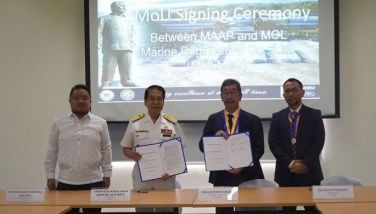Special Report: Millions continue to suffer from climate change
MANILA, Philippines – These days in some parts of the Bicol region, hitherto regarded as the country’s typhoon belt, farmers can hardly predict the shift in wet and dry seasons.
In Luzon’s western seaboard, stories of drought abound among those living near Tabtaban Lake in Mindoro Occidental. In 2010, for instance, the area had little rainfall, and the lake dried up.
In northern Mindanao, land tillers in Misamis Oriental now find it difficult to foresee the onset of the dry and wet seasons.
Changing weather patterns have been “scrambling” the country’s calendar, particularly in agriculture.
Several years ago, when “climate change” was an “abstract” idea for ordinary Filipinos, then University of the Philippines Los Baños (UPLB) chancellor Rex Victor Cruz declared at an international science forum in Los Baños: “Climate change is real, it is serious, it is urgent, and it threatens the security and economy of nations, however large or small, wealthy or poor.”
An average of 326 climate-related disasters had been taking place from 2000 to 2004, affecting 262 million people or one in 19 of the world’s population, the United Nations Environment Program-Bureau of Crisis Prevention and Recovery (UNEP-BCPR) reported.
The UNEP-BCPR report was cited in a science conference held recently at the Southeast Asian Regional Center for Graduate Study and Research in Agriculture (SEARCA), based in UPLB.
Devastating typhoons, particularly Yolanda in 2013, showed that the typhoon belt had shifted from its traditional path (Bicol and northern Luzon, particularly Batanes) to the Visayas and outlying areas, according to the analysis of the Climate Change Commission (CCC).
The Intergovernment Panel on Climate Change (IPCC) had also concluded that the manifestations of climate change observed over the years pointed to “increasing air and ocean temperatures, widespread melting of snow and ice, and rising global average sea level,” Cruz said in an international conference held at SEARCA.
Cruz was among the scientists, five of them Filipinos – Jett Villarin, Rosa Perez, Rodel Lasco and Juan Pulhin – who composed the IPCC technical committee. Together with former United States vice president Al Gore Jr., the IPCC won the Nobel Peace Prize in 2007. Gore’s documentary film “An Inconvenient Truth” has generated global interest in the impacts of climate change.
The IPCC was established in 1988 by the World Meteorological Organization (WMO) to build up and disseminate knowledge about climate change and to lay the foundations for measures needed to counteract climate change.
Several global scientific studies have noted that, among other things, the Philippines’ geographic landscape features stand to be considerably altered in light of rising sea levels triggered by the world’s warming temperatures.
By 2020, the country’s average temperature is projected to increase by one degree Celsius. By 2050, the average temperature will be two degrees more than the current normal: 32 degrees Celsius.
Battle at grassroots
Agriculture, which is the most vulnerable to climate change due to its heavy reliance on the weather, “remains to be the backbone of the global economy as it also bears the responsibility of feeding a population that has grown by leaps and bounds while production continues to diminish due to losses in our natural resources,” SEARCA director Gil Saguiguit Jr. said.
He stressed that the battle for climate change “is either won or lost in the grassroots level where localized interventions will play a big role.”
The Los Baños-based International Rice Research Institute (IRRI) has also assessed that for every one degree Celsius increase in temperature, a 15-percent reduction in rice yield follows.
“The impact on rice is simple arithmetic: a three-degree Celsius increase means a 45-percent reduction in rice harvest. That’s a reduction of almost half of what would be available for food,” the CCC said.
Globally, the impact of climate change will be “most disastrous to the semi-arid tropics, home to two billion people and most of the world’s poor,” former agriculture secretary William Dar once said.
Stronger typhoons
In the Philippines, while the frequency of typhoons remains the same – about 20 a year – five or six of them are now much stronger, reaching wind speeds of 220 kilometers per hour compared to only two or three in previous years.
“And they bring a lot of rains,” the CCC stated as it cited a Philippine Atmospheric, Geophysical and Astronomical Services Administration projection, based on global computer models, that the rainy season will be up to 60 percent wetter than now and the dry season will be 60 percent dryer.
Other studies have also turned out chilling results for Filipinos.
For instance, the International Institute for Environment and Development has estimated that more than 634 million people live in low elevation coastal zones and will be severely affected by climate change. The Philippines is among 10 countries (including China, India, Indonesia, Vietnam, Japan and the United States) with the highest population densities in LECZ.
Another study stated that 81 to 90 percent of Filipinos, now numbering about 104 million, are coastal inhabitants who are also among the country’s “poorest of the poor.”
The IPCC has also projected that 90,000 to 140,000 hectares of coastal land will go under water if the sea rises in the coming decades. Another study has warned that if much of the world’s ice caps melt owing to climate change, at least 171 Philippine coastal towns in 10 vulnerable provinces will go under water.
- Latest

























